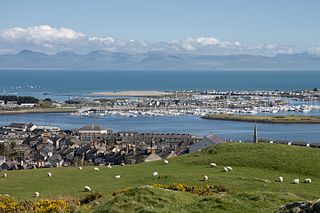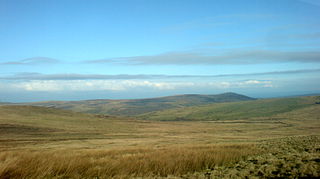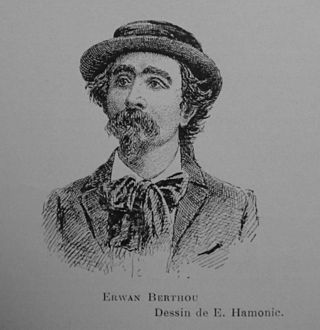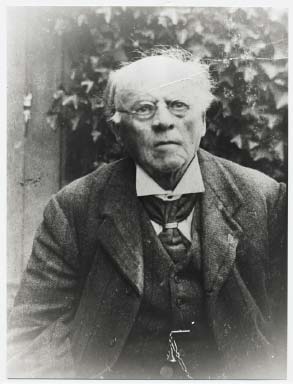Related Research Articles

Stonehenge is a prehistoric monument on Salisbury Plain in Wiltshire, England, two miles (3 km) west of Amesbury. It consists of an outer ring of vertical sarsen standing stones, each around 13 feet (4.0 m) high, seven feet (2.1 m) wide, and weighing around 25 tons, topped by connecting horizontal lintel stones. Inside is a ring of smaller bluestones. Inside these are free-standing trilithons, two bulkier vertical sarsens joined by one lintel. The whole monument, now ruinous, is aligned towards the sunrise on the summer solstice. The stones are set within earthworks in the middle of the densest complex of Neolithic and Bronze Age monuments in England, including several hundred tumuli.

In Welsh culture, an eisteddfod is an institution and festival with several ranked competitions, including in poetry and music. The term eisteddfod, which is formed from the Welsh morphemes: eistedd, meaning 'sit', and fod, meaning 'be', means, according to Hywel Teifi Edwards, "sitting-together." Edwards further defines the earliest form of the eisteddfod as a competitive meeting between bards and minstrels, in which the winner was chosen by a noble or royal patron.

Pwllheli is a market town and community of the Llŷn Peninsula in Gwynedd, north-western Wales. It had a population of 4,076 in 2011 of whom a large proportion, 81%, are Welsh speaking. Pwllheli is the place where Plaid Cymru was founded. It is the birthplace of the Welsh poet Sir Albert Evans-Jones.

The Preseli Hills, known locally and historically as the Preseli Mountains, is a range of hills in western Wales, mostly within the Pembrokeshire Coast National Park.

Mynachlog-ddu is a village, parish and community in the Preseli Hills, Pembrokeshire, Wales. The community includes the parish of Llangolman.

Carn Menyn is a grouping of craggy rock outcrops or tors in the Preseli Hills in the Welsh county of Pembrokeshire.

The National Eisteddfod of Wales is the largest of several eisteddfodau that are held annually, mostly in Wales. Its eight days of competitions and performances are considered the largest music and poetry festival in Europe. Competitors typically number 6,000 or more, and overall attendance generally exceeds 150,000 visitors. The 2018 Eisteddfod was held in Cardiff Bay with a fence-free 'Maes'. In 2020, the event was held virtually under the name AmGen; events were held over a one-week period.
William Glyn Hughes Simon was a Welsh prelate who served as the Anglican Archbishop of Wales from 1968 to 1971.
Richard Lewis, known as Dic Penderyn, was a Welsh labourer and coal miner who lived in Merthyr Tydfil and was involved with the Merthyr Rising of 3 June 1831. In the course of the riot he was arrested alongside Lewis Lewis, one of the primary figures in the uprising, and charged with stabbing a soldier with a bayonet. The people of Merthyr Tydfil doubted his guilt, and signed a petition for his release. However, he was found guilty and hanged on 13 August 1831. After his death he was treated as a martyr in Merthyr and across Wales.
This article is about the particular significance of the year 1968 to Wales and its people.

Nigel Jenkins was an Anglo-Welsh poet. He was an editor, journalist, psychogeographer, broadcaster and writer of creative non-fiction, as well as being a lecturer at Swansea University and director of the creative writing programme there.

Stonehenge has been the subject of many theories about its origin, ranging from the academic worlds of archaeology to explanations from mythology and the paranormal.

Erwan Berthou was a French and Breton language poet, writer and neo-Druidic bard. His name is also spelled Erwan Bertou and Yves Berthou.

Howell Elvet Lewis, widely known by his bardic name Elfed, was a Welsh Congregational minister, hymn-writer, and devotional poet, who served as Archdruid of the National Eisteddfod of Wales from 1924 to 1928.

Owen Morgan, also known by his bardic name Morien was a Welsh journalist, and a writer of books on the subject of neo-druidism. Morgan developed the mythology of both Iolo Morganwg and Myfyr Morganwg, and his druidical writing is not taken seriously by historians.
Richard Bryn Williams, or Bryn Williams (1902–1981), was a Welsh writer, poet, playwright and historian. From 1975 to 1978 he was Archdruid of the National Eisteddfod of Wales.
The building stones of Wales are many and varied reflecting the diverse geology of the country. Some of the earliest known use of natural stone for building purposes was the sourcing of Ordovician dolerite in the Preseli Hills for the 'bluestone' lintels of Stonehenge. Other early use was in the construction of dolmens, burial cairns and stone circles in the late Stone Age and Bronze Age. The tradition of building in stone was continued into Iron Age with the establishment of such hill forts as those at Tre'r Ceiri in North Wales and Garn Goch in the south.
Myrddin ap Dafydd is a Welsh writer, publisher and chaired bard. In 2018 he was elected Archdruid of Wales.

Gorsedd Cymru, or simply the Gorsedd or the Orsedd, is a society of Welsh-language poets, writers, musicians and others who have contributed to the Welsh language and to public life in Wales. Its aim is to honour such individuals and help develop and promote their fields in addition to maintaining relationships with other Celtic nations and Y Wladfa. The Gorsedd is most prominent at the National Eisteddfod of Wales where it is responsible for the main ceremonies held.

Waun Mawn is the site of a possible dismantled Neolithic stone circle in the Preseli Hills of Pembrokeshire, Wales. The diameter of the postulated circle is estimated to be 110 m (360 ft), the third largest diameter for a British stone circle.
References
- ↑ Western Mail, 23 September 2002.
- ↑ British Archaeology Issue 78 September 2004, ISSN 1357-4442.
- ↑ Milford Mercury newspaper dated Friday 25 June 2004
- ↑ Archdruid wants Stonehenge back BBC, 22 June 2004
